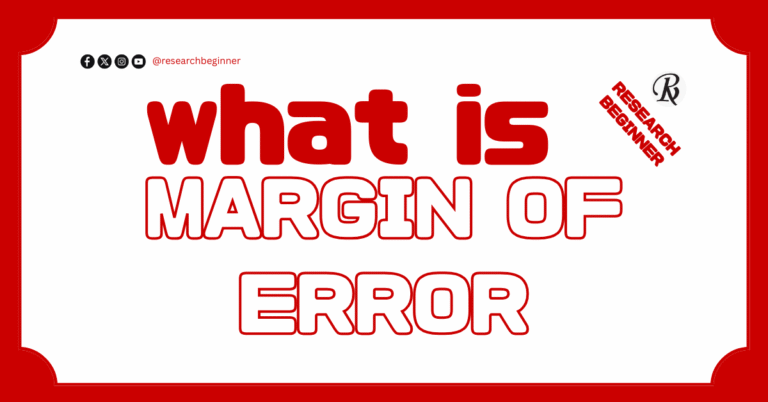Should Qualitative studies Have Variables?
If you’ve just started your journey as a researcher, you’ve probably come across the term “variables” — and perhaps even felt a little intimidated by it. Variables are at the heart of most research designs, but they don’t have to be complicated. Think of them simply as the elements in your study that can change or vary.
Whether you’re running a numbers-heavy statistical analysis or exploring people’s lived experiences, understanding variables (and their role in your chosen approach) is essential for clarity and credibility. But here’s the tricky part: while variables are central in quantitative studies, their role in qualitative research is… well, different.
In this post, we’ll break it all down so you can confidently answer: What exactly are variables, and do qualitative studies even use them?
What Are Variables in Research?
In research, a variable is anything that can change or vary during your study. It can be a characteristic, a value, or a condition.
Variables are like the “moving parts” of your research — they are what you study, measure, or observe to answer your research question.
Main Types of Variables
- Independent Variable (IV) – The factor you change or control to see its effect on something else.
Example: In a study on sleep and productivity, hours of sleep is your independent variable. - Dependent Variable (DV) – The factor you measure, which changes as a result of the independent variable.
Example: Productivity scores are your dependent variable, because they depend on the amount of sleep. - Control Variables – Factors you keep constant so they don’t influence your results.
Example: Ensuring all participants work in similar environments during the productivity test. - Extraneous Variables – Uncontrolled factors that could affect your dependent variable.
Example: A participant’s caffeine intake might influence productivity, even though your study isn’t about coffee.
Variables in Quantitative Research
In quantitative research, variables are the backbone of the study design. They are:
- Clearly defined before data collection.
- Measured numerically (e.g., height in centimeters, test scores, reaction times).
- Statistically analyzed to identify relationships, differences, or patterns.
For example, in a study testing a new teaching method:
- IV: Teaching method (traditional vs. digital learning)
- DV: Students’ exam scores
- Control variables: Same subject, same exam difficulty, same study period.
Quantitative studies thrive on precise measurement because they aim to produce objective, generalizable results.
Do Qualitative Studies Have Variables?
Here’s where it gets interesting: qualitative research doesn’t typically deal with variables in the same way as quantitative research.
Instead of measuring change in numbers, qualitative research focuses on:
- Concepts
- Themes
- Phenomena
- Meanings and experiences
In fact, using the word “variable” in a qualitative study can sometimes cause confusion because qualitative research doesn’t aim to manipulate or measure elements numerically.
For example, if you’re conducting interviews about how teachers experience online learning:
- You’re not measuring “teacher motivation” as a variable.
- Instead, you’re exploring the concept of motivation through participants’ stories, patterns, and perspectives.
However, qualitative researchers still identify factors of interest — they’re just framed as focus areas or phenomena, not as measurable variables.
Key Differences Between Quantitative and Qualitative Use of Variables
| Aspect | Quantitative Research | Qualitative Research |
| Purpose | Measure and test relationships between variables | Explore meanings, patterns, and experiences |
| Nature of Variables | Clearly defined, measurable, often numerical | Broad concepts or phenomena, not always called “variables” |
| Data Type | Numerical data (e.g., percentages, scores) | Descriptive data (e.g., interview transcripts, observations) |
| Analysis | Statistical tests, numerical comparisons | Thematic analysis, narrative analysis |
| Outcome | Generalizable findings | Rich, detailed understanding |
Why This Matters for Beginners
Understanding variables helps you:
- Design better research questions – You’ll know what you’re studying and how.
- Choose the right methodology – You’ll avoid forcing “variables” into qualitative designs where they don’t belong.
- Communicate clearly – Supervisors, reviewers, and readers will understand your approach and findings.
Common Misconceptions
- “Every study must have variables.”
– Not true. Qualitative studies may not use variables in the strict sense. They focus on concepts instead. - “Variables always mean numbers.”
– Numbers dominate quantitative research, but variables can also be categories (e.g., gender, profession) in mixed methods. - “Control variables are only for scientists in labs.”
– Even in social sciences, controlling certain factors improves accuracy.
Conclusion
Variables are simply the aspects of your study that can change. In quantitative research, they are the measurable building blocks of your design. In qualitative research, the focus shifts to exploring concepts and phenomena without rigid measurement.
As a beginner, your goal is to:
- Understand the nature of your research.
- Use “variables” appropriately for your approach.
- Avoid forcing quantitative concepts into qualitative designs.
Quick Recap Checklist
✅ I can define what a variable is.
✅ I know the difference between independent, dependent, control, and extraneous variables.
✅ I understand how variables are used in quantitative research.
✅ I know that qualitative research focuses on concepts, not traditional variables.
✅ I can avoid common misconceptions about variables.
If you approach variables with curiosity instead of fear, you’ll find they’re just a tool — and like any tool, their value depends on how you use them in your chosen research path.







